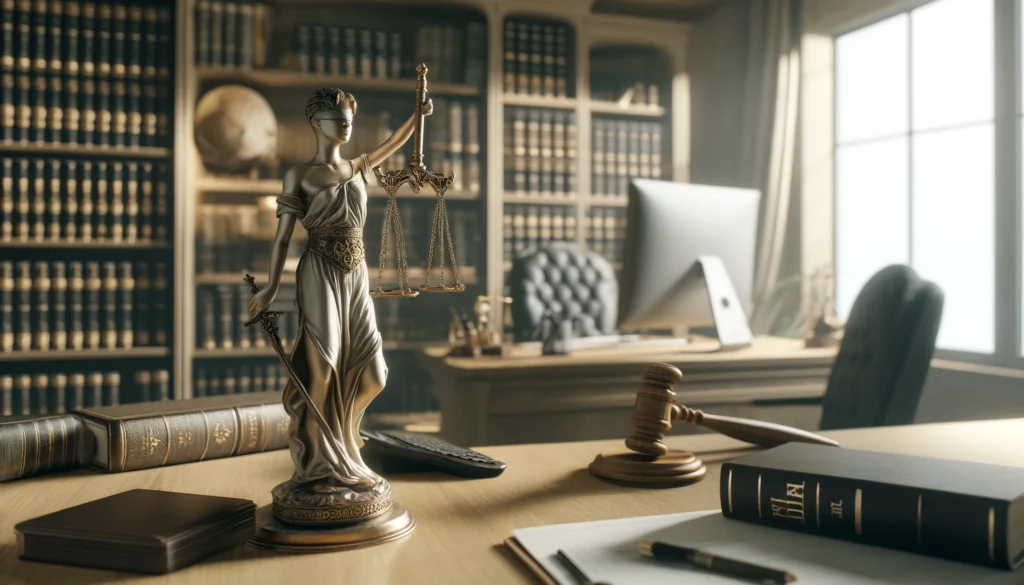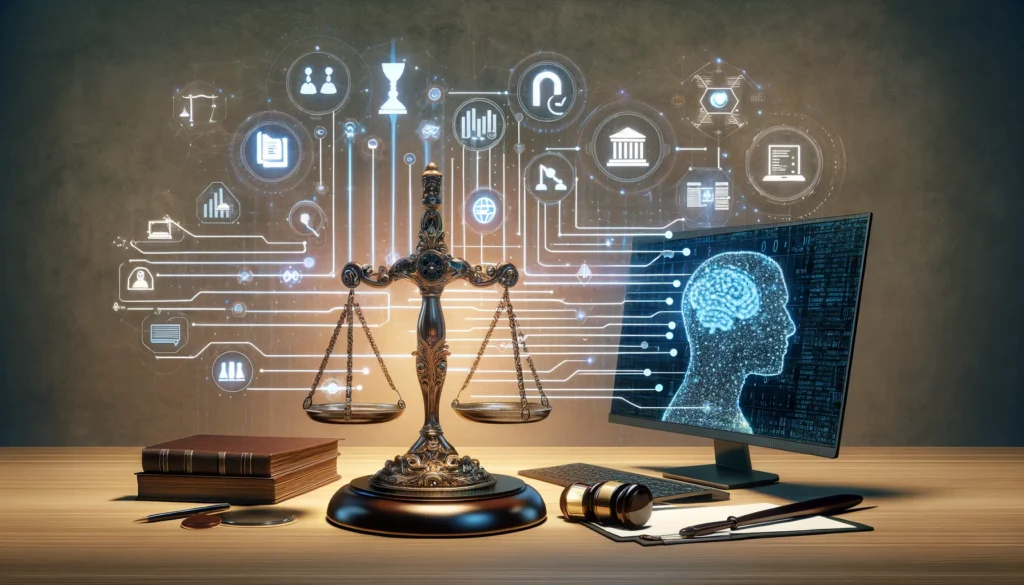
Welcome to the Future: Revolutionizing Paralegal Tasks
The legal landscape is undergoing a paradigm shift, and paralegals find themselves at the heart of this transformation. The fusion of artificial intelligence (AI) and large language models (LLMs), such as ChatGPT, has redefined the boundaries of what paralegals can achieve. These technologies are not just an incremental upgrade but a revolutionary force, altering how routine tasks are executed.
Why should AI and LLMs matter to paralegals? The answer lies in increased efficiency, reduced manual labor, and a remarkable potential for accuracy. Paralegals can now channel their cognitive efforts into more complex and gratifying tasks, leaving the repetitive ones to AI. This transformation is not merely theoretical; it is a tangible shift reshaping today’s legal practices.
ChatGPT: A Paralegal’s New Best Friend
Understanding what ChatGPT can do is crucial for modern paralegals. ChatGPT, an advanced language model developed by OpenAI, can draft, review, and refine legal documents, thereby eliminating the drudgery of repetitive tasks. It effortlessly transforms raw data into coherent and legally sound texts, making the intersection of AI and legal documentation an area ripe with possibilities.
At this intersection, ChatGPT stands out because of its ability to handle complex legal jargon and context. By leveraging the capabilities of AI, paralegals can produce meticulous corporate dissolution documents, complete with requisite legal nuances. This not only saves time but also enhances document reliability and consistency.
Yet, the technology’s benefits extend beyond mere convenience. ChatGPT’s role in legal documentation serves as an innovative step towards a future where artificial intelligence complements human expertise, driving unparalleled outcomes. Up next, we delve into the initial setup and fine-tuning required to harness this tool effectively.
Laying the Groundwork: Initial Setup and Fine-Tuning
Embarking on your journey with ChatGPT starts with creating an account, an intuitive process designed for user-friendliness. The setup involves primary steps like user registration and selecting subscription plans that best suit your needs. Guidance for this procedure is readily available on the OpenAI website.
Once your account is active, the next crucial phase is setting up custom instructions. These instructions are foundational for ensuring that ChatGPT understands your specific legal requirements. Tailoring these guidelines involves specifying typical use-cases, preferred legal terminologies, and any existing templates you already utilize.
Training ChatGPT with relevant legal context requires manual input of previous work samples and datasets reflecting the specific nature of corporate dissolution. For instance, feeding the AI examples of past dissolution documents, annotated with comments on structure and legal significance, can fine-tune it to meet high standards specific to your practice.
Equipped with this foundational knowledge, you’re set to explore the realm of prompt engineering, the secret sauce to optimizing ChatGPT’s performance in legal documentation.
Prompt Engineering: The Unsung Hero
Crafting effective prompts is pivotal in guiding ChatGPT’s responses. A well-structured prompt involves detailed instructions about the nature of the task. For instance, a prompt such as “Draft a corporate dissolution agreement for a California-based LLC, including terms of asset distribution and board resolution text” will yield far more precise results than a vague request.
The importance of nuance cannot be overstated. Prompts should be straightforward yet detailed enough to cover all necessary facets. Including specific sections, statutory references, and customized clauses ensures a more refined output. Consider this prompt as an example: “Generate a Section on debt settlement in the corporate dissolution agreement, referencing California Corporations Code Section 1900(a).”
Best practices for precision and clarity involve:
- Specificity: The more detailed the prompt, the better the result. Include as much specific information as possible.
- Iterative Feedback: Review initial outputs and refine your prompts iteratively to better align with your needs.
- Clarity: Avoid ambiguous language. Clearly articulated instructions yield the most reliable outcomes.
Now that we’ve delved into prompt engineering, let’s move to the practical aspect of document creation, providing a step-by-step guide to navigate this seamless process.
Document Creation: Step-by-Step Guide
The journey from a query to a final corporate dissolution document involves a blend of calculated steps. Start by structuring your interaction with ChatGPT through a series of logical queries that scaffold the entire document. Begin your session with a broader query, then narrow down to specifics.
Key sections of a corporate dissolution document typically include:
- Introduction and Intent
- Board Resolution
- Agreements on Debt Settlement and Asset Distribution
- Tax Compliance Statements
- Final Legal Notices
When interacting with ChatGPT, articulate each section as a standalone prompt, ensuring completeness and congruence with the overall document. For example, querying “Draft the debt settlement section detailing all liabilities and using appropriate legal terminologies” will guide ChatGPT to generate focused, relevant content.
To ensure legal completeness, review each segment for statutory compliance and fill any gaps using specific subsections from relevant codes. This meticulous approach ensures your document aligns with jurisdictional requirements and legal standards.
Next, let’s look at how to review and refine the AI outputs to uphold the high standards demanded in legal practices.
Quality Control: Reviewing and Refining AI Outputs
First and foremost, human oversight in reviewing ChatGPT-generated documents cannot be overstated. While ChatGPT can draft documents with remarkable accuracy, a thorough review by a qualified paralegal or attorney ensures no critical details are overlooked.
Adopt various tools and techniques for error-checking, such as legal spell checkers, statutory compliance software, and plagiarism detection tools. These supplementary tools serve as a secondary layer of scrutiny, optimizing the quality of your final document.
Integrating feedback is vital for continuous improvement. Use errors or oversights from completed documents to refine future prompts and custom instructions. This feedback loop will incrementally enhance ChatGPT’s performance, yielding near-perfect results over time.
Shifting our focus, it’s also imperative to address the ethical and legal dimensions associated with the usage of AI in legal tasks.
Ethical and Legal Considerations
Ensuring compliance with legal standards is paramount when leveraging AI for legal documentation. Always cross-reference AI-generated text with up-to-date legal statutes and ethical guidelines.
Confidentiality and data security are non-negotiable. Ensure that any data input into ChatGPT complies with data protection laws, and is encrypted to prevent unauthorized access.
With these safeguards in place, it’s clear that AI will continuously redefine paralegal roles, so let’s conclude by pondering the future trajectory of this evolving profession.
The Future of Paralegal Work
The integration of AI like ChatGPT signals evolving roles and exponentially increasing efficiency in paralegal work. Paralegals can embrace these advancements to gain a competitive edge, simplifying routine tasks and enhancing their strategic involvement in complex legal matters.
By embracing these technological advancements, the paralegal profession stands at the forefront of an exciting era, transforming challenges into unprecedented opportunities for growth and innovation.


